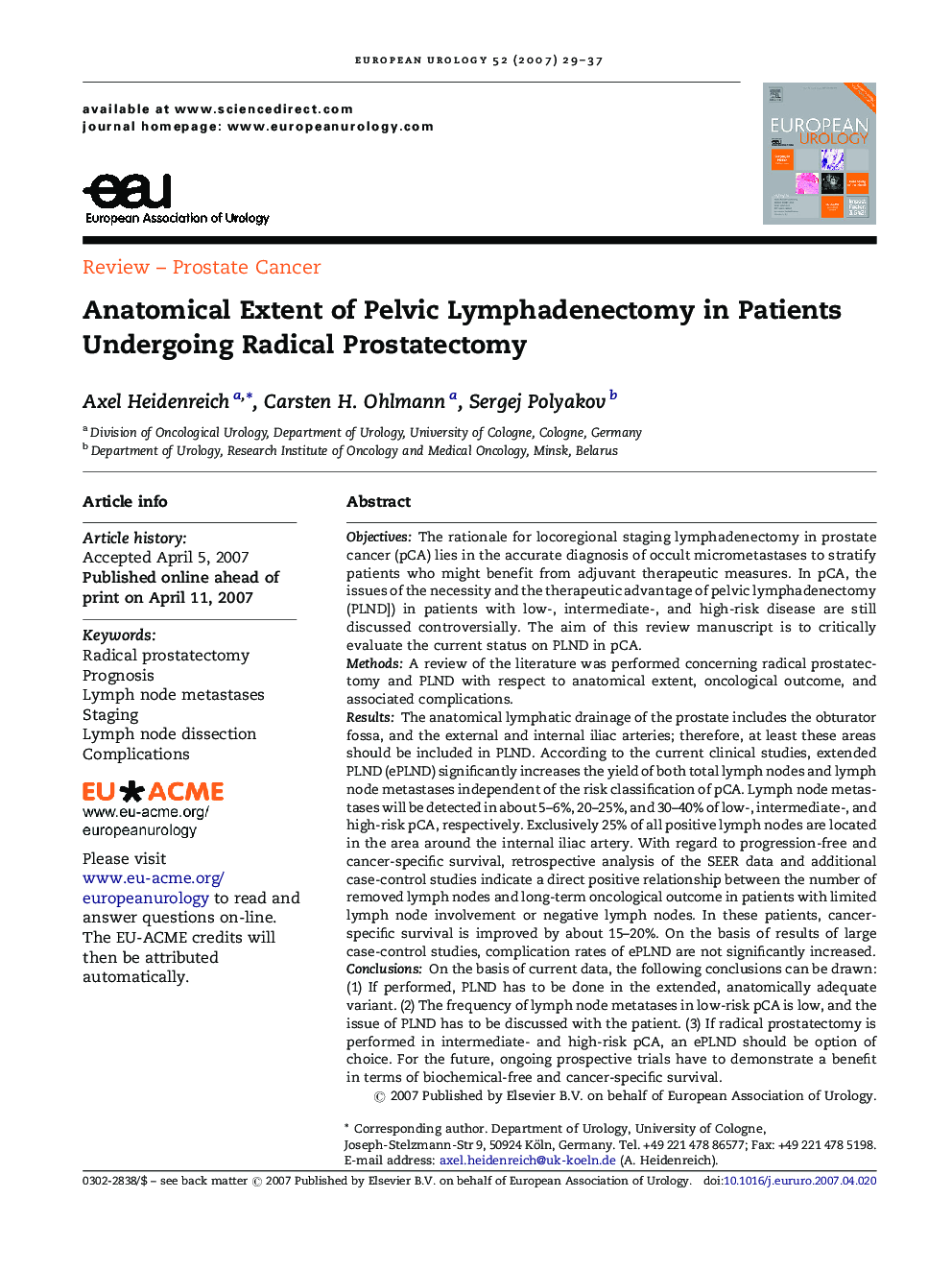| کد مقاله | کد نشریه | سال انتشار | مقاله انگلیسی | نسخه تمام متن |
|---|---|---|---|---|
| 3926298 | 1253147 | 2007 | 9 صفحه PDF | دانلود رایگان |

ObjectivesThe rationale for locoregional staging lymphadenectomy in prostate cancer (pCA) lies in the accurate diagnosis of occult micrometastases to stratify patients who might benefit from adjuvant therapeutic measures. In pCA, the issues of the necessity and the therapeutic advantage of pelvic lymphadenectomy (PLND]) in patients with low-, intermediate-, and high-risk disease are still discussed controversially. The aim of this review manuscript is to critically evaluate the current status on PLND in pCA.MethodsA review of the literature was performed concerning radical prostatectomy and PLND with respect to anatomical extent, oncological outcome, and associated complications.ResultsThe anatomical lymphatic drainage of the prostate includes the obturator fossa, and the external and internal iliac arteries; therefore, at least these areas should be included in PLND. According to the current clinical studies, extended PLND (ePLND) significantly increases the yield of both total lymph nodes and lymph node metastases independent of the risk classification of pCA. Lymph node metastases will be detected in about 5–6%, 20–25%, and 30–40% of low-, intermediate-, and high-risk pCA, respectively. Exclusively 25% of all positive lymph nodes are located in the area around the internal iliac artery. With regard to progression-free and cancer-specific survival, retrospective analysis of the SEER data and additional case-control studies indicate a direct positive relationship between the number of removed lymph nodes and long-term oncological outcome in patients with limited lymph node involvement or negative lymph nodes. In these patients, cancer-specific survival is improved by about 15–20%. On the basis of results of large case-control studies, complication rates of ePLND are not significantly increased.ConclusionsOn the basis of current data, the following conclusions can be drawn: (1) If performed, PLND has to be done in the extended, anatomically adequate variant. (2) The frequency of lymph node metatases in low-risk pCA is low, and the issue of PLND has to be discussed with the patient. (3) If radical prostatectomy is performed in intermediate- and high-risk pCA, an ePLND should be option of choice. For the future, ongoing prospective trials have to demonstrate a benefit in terms of biochemical-free and cancer-specific survival.
Journal: European Urology - Volume 52, Issue 1, July 2007, Pages 29–37